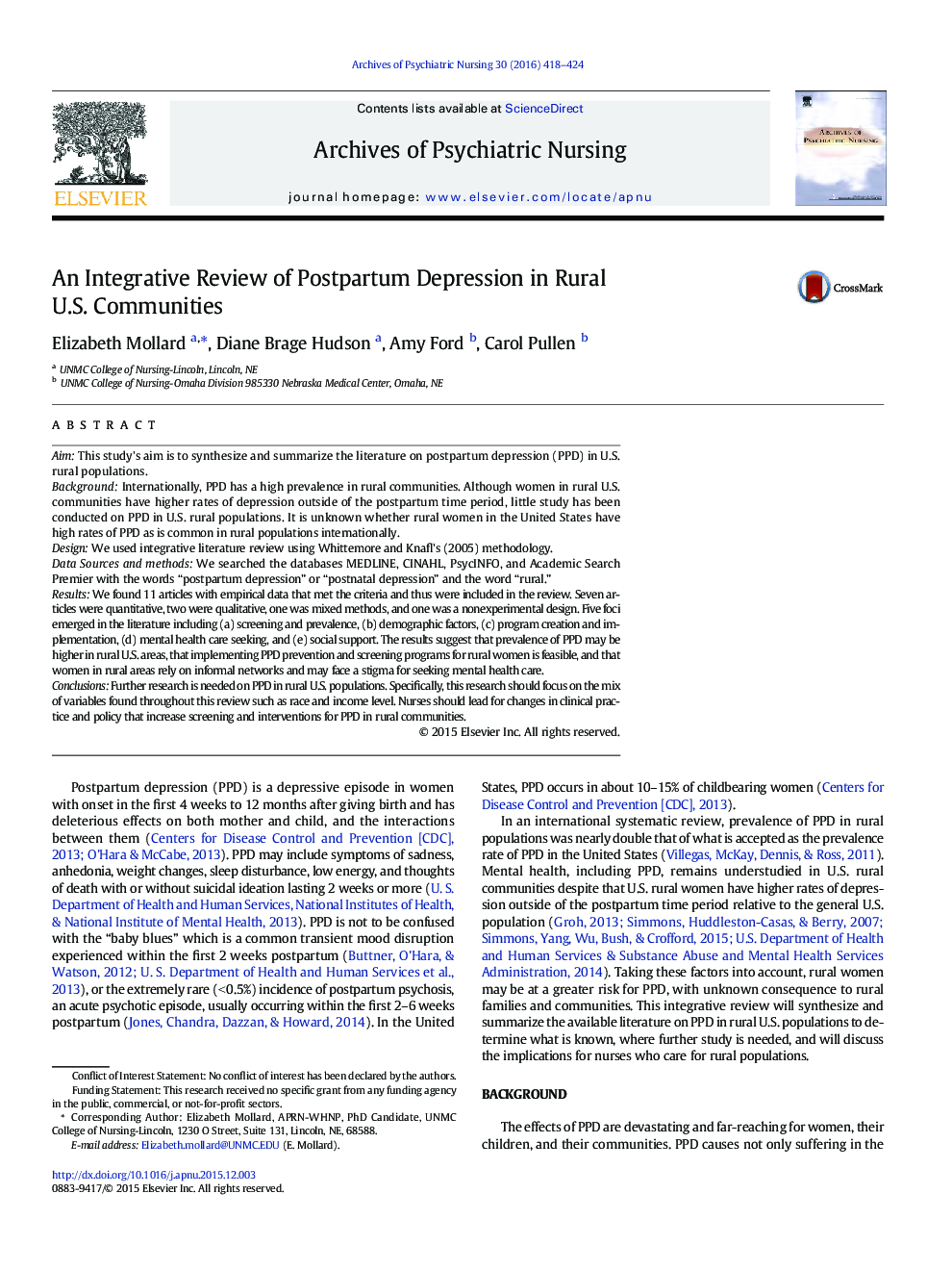| Article ID | Journal | Published Year | Pages | File Type |
|---|---|---|---|---|
| 314861 | Archives of Psychiatric Nursing | 2016 | 7 Pages |
AimThis study's aim is to synthesize and summarize the literature on postpartum depression (PPD) in U.S. rural populations.BackgroundInternationally, PPD has a high prevalence in rural communities. Although women in rural U.S. communities have higher rates of depression outside of the postpartum time period, little study has been conducted on PPD in U.S. rural populations. It is unknown whether rural women in the United States have high rates of PPD as is common in rural populations internationally.DesignWe used integrative literature review using Whittemore and Knafl's (2005) methodology.Data Sources and methodsWe searched the databases MEDLINE, CINAHL, PsycINFO, and Academic Search Premier with the words “postpartum depression” or “postnatal depression” and the word “rural.”ResultsWe found 11 articles with empirical data that met the criteria and thus were included in the review. Seven articles were quantitative, two were qualitative, one was mixed methods, and one was a nonexperimental design. Five foci emerged in the literature including (a) screening and prevalence, (b) demographic factors, (c) program creation and implementation, (d) mental health care seeking, and (e) social support. The results suggest that prevalence of PPD may be higher in rural U.S. areas, that implementing PPD prevention and screening programs for rural women is feasible, and that women in rural areas rely on informal networks and may face a stigma for seeking mental health care.ConclusionsFurther research is needed on PPD in rural U.S. populations. Specifically, this research should focus on the mix of variables found throughout this review such as race and income level. Nurses should lead for changes in clinical practice and policy that increase screening and interventions for PPD in rural communities.
